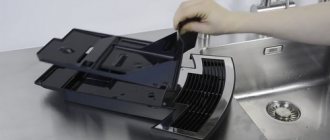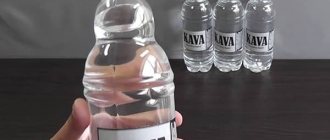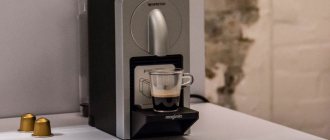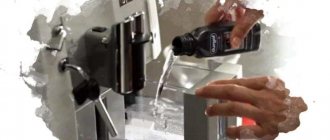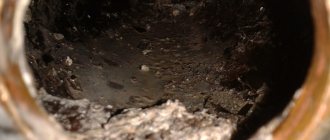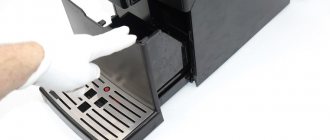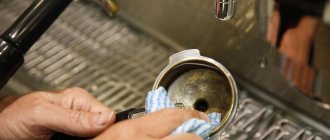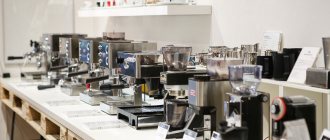Today there are a lot of products designed for descaling. Despite the list of functions and versatility of use, it is not always possible to choose exactly the substance that will cope with multi-layer deposits. Where does scale come from?
There are a couple of reasons to clean your appliances:
- Electricity consumption increases due to increased heating time.
- Disconnecting the device from the network in heating options.
- Reduced taste and quality of water.
- The device stops working.
Why do you need a descaling agent for coffee machines?
The abundance of household appliances in our kitchens not only makes life easier, but also requires careful, even careful operation. Some structural components of the device are constantly in contact with water:
- Pallet
- Water container
- Water supply system
All these elements are difficult to access, so conventional, mechanical methods of descaling cannot be applied to them. It is necessary to resort to chemical agents to remove sediment and lime deposits.
Why do plaque and scale form?
The water we use has a complex chemical composition, including mineral salts. Basically, these are magnesium and calcium salts. When heated, they precipitate in the form of insoluble flakes. Accumulating with each new portion of water, sediments form a dense crust. The higher the water hardness, the more mineral salts it contains, and the faster plaque forms. Due to its high calcium content, it is often called limescale, and the removal process is called decalcification.
Why must mineral crust be removed?
- Lime deposits impair the operation of the device: they slow down the flow of water, impair the quality of frothing, and unbalance the operation of the coffee machine. The more complex and advanced the model, the more dangerous a violation of the operating mode is for it.
- Lime deposits degrade the quality of the finished drink by getting into the coffee along with water.
- The resulting crust can break off, and the separated piece is quite capable of damaging the entire device. For example, sometimes chunks of sediment block the coffee water injection system.
- Scale blocks uniform heat transfer, acting as an insulating material, which can lead to overheating and damage to the coffee machine.
According to statistics from repair centers, the most common cause of breakdown of a coffee machine or coffee maker is scale formation.
Regular decalcification - descaling - will help you avoid unpleasant consequences for your coffee maker or coffee machine.
Signs of scale formation
The need for cleaning can be determined by the quality of the drink itself. Coffee may acquire a strange taste, and even if the recipe is followed, it remains weak. The foam also ceases to be thick and high due to a decrease in pressure. Another sign is a musty, unpleasant odor.
You can test the coffee machine using plain water. To do this, start the device in normal mode, but do not add the coffee itself. If, as a result, a white precipitate is visible in the cup, then we can confidently speak about accumulated deposits.
A few more signs relate to the operation of the device itself:
- the drink flows out in a thinner stream than before;
- noise when using the device, because overheating occurs, parts rub more strongly due to scale between them;
- water flows into the pan;
- The cooking process itself takes longer than usual.
How often should you descale your coffee machine?
Modern programmable models of coffee machines themselves inform owners about the need to cleanse. The display lights up: “Carry out decalcification”; in some models, the signal is a flashing red light. This function is found in complex, programmable coffee machines, and without descaling the device will not allow you to make coffee.
In programmable coffee machines, the water hardness setting is set by default and requires cleaning after preparing 100-120 cups of drink. If the water you use has a low hardness level, you will need to change the appropriate setting on your coffee machine manually. Working with soft water requires less frequent decalcification; the machine will have to be cleaned every 200-220 cups.
If your device does not have a notification function about the need to clean scale, then you can navigate by the time that has passed since the last cleaning.
- When using hard water, the coffee machine needs to be cleaned once every month and a half.
- Very soft water leaves much less sediment, so cleaning can be done every six months.
Signs of scale formation
There are indirect signs that will indicate the need for cleaning:
- The coffee flows into the cup in a thin stream.
- During operation, the device makes more noise than usual.
- The milk froth whips up more slowly, and its quality deteriorates; it becomes watery and not as fluffy.
- Water leaks into the pan.
To determine the condition of the system, perform a simple test - run water through the system without pouring coffee powder, and then carefully examine the contents of a cup of water passed through the coffee maker. If you see a whitish sediment at the bottom, then it’s time to descale the device.
Resourceful owners have invented an original way to determine the optimal period for cleaning a coffee machine. They simultaneously decalcify the kettle and coffee maker, and then monitor the condition of the kettle. As soon as plaque forms on its inner surface, it is time to clean the coffee maker. This method can be used if you use the kettle and coffee machine with approximately the same intensity.
Errors when cleaning
A coffee machine is a complex technological mechanism that requires regular maintenance. Once a month, the equipment must be cleaned of limescale. Otherwise, ignoring these recommendations will affect the quality performance of the device and the taste of the prepared drink.
Equipment does not last forever, and over time after use, malfunctions are common.
- Water is leaking at the sealing connection with the equipment.
It is necessary to visually inspect the equipment for the presence of coffee residues on the sealing ring. If there is a malfunction, it is recommended to rinse the ring and horn.
Next, you can evaluate the condition of the sealing ring - it probably has cracks and lost elasticity due to the presence of salt and fat deposits on the equipment.
The ideal option is to remove the ring without much effort; just lift the seal from the side and pull it out with a screwdriver. It happens that the seal is fixed with a mesh; the seal must be carefully removed and not torn. If the cause of the problem lies in the presence of salt or fat deposits, the part is washed, decalcified and the equipment is cleaned using special means.
- The stream of coffee from the nozzle (horn) has decreased, become thinner, there is a whistle and hissing that is uncharacteristic of the operation of the equipment.
The cause of the malfunction is clogging of the brewer mesh or filter with coffee residues or scale. Limescale can be removed by cleaning. Coffee grains are removed manually: washing the strainer, cleaning the filter, tubes, holes.
Attention! When cleaning the tubes, be careful not to damage the device, otherwise this may affect its operation.
- The machine is crackling, humming, and the coffee is not brewing.
In this case, it is necessary to make sure that the liquid is supplied and heated during operation of the equipment. If water from the reservoir is collected and heated, but coffee is not dispensed, then you need to pass the water through a cappuccino machine. There may be an air lock in the system. If this method does not have the desired effect, then it is necessary to flush all tubing systems using products from the device manufacturer.
- The coffee machine does not respond to pressing the buttons - they are highlighted, but do not work.
Perhaps the cause of the problem is the buttons not working. If the buttons stick, you should bring them into the proper position, everything is removed, treated with alcohol, and dirt is removed.
- Water leakage.
This is a common problem. When the equipment is used for 3-5 years, oil seals, O-rings or silicone tubes begin to fail. In this case, the device requires diagnostics; there is no need to replace parts at random.
- The device does not turn on.
It is better to check the device and its functionality when connected to another outlet - the cord may have failed. If damage is found, you can replace the cord or plug.
- The coffee grinder works, but the coffee does not grind.
Check for grains. If there are beans, but the machine does not grind the beans, the coffee is raw and very greasy. It is necessary to clean the equipment; upon completion, you need to set the maximum cleaning mode. If the process starts, it is recommended to brew 5 cups and return to the usual mode of preparing the drink. The optimal solution is complete disassembly of the equipment and manual cleaning.
- When you press the button for brewing a drink, the equipment does not work, the device displays an error about the absence of beans.
In devices from different manufacturers, the cause of the malfunction may be different. Equipment diagnostics will help identify the exact cause of the breakdown.
- The equipment turns on, but displays an error on the indicator.
This happens because one of the equipment sensors did not work when turned on. In this case, the machine needs to be cleaned of coffee residues and the parts and components washed.
- An error appears on the display or control panel.
The error is determined using the operating manual. As a rule, the equipment displays an error number, and its description can be found in the instructions.
- The cappuccino maker does not work and the milk does not froth.
The cause of the malfunction is the quality of the milk or a clogged cappuccino maker.
- The coffee machine does not detect water in the tank.
Malfunction of the float, its loss when washing equipment.
- The pressure gauge does not work.
Attention! Scale has clogged the tube leading to the pressure gauge. The tube needs to be removed, cleaned or replaced, and ensure that the channels leading to the pressure gauge are clean.
Descaling liquid
Branded or generic liquid cleaner can be purchased at most hardware stores. The manuals for coffee makers of a certain brand strongly recommend decalcification with a liquid of the same brand.
- Branded descaling liquids are produced by many large manufacturers: Saeco, De'Longhi, Melitta. It would be more accurate to say that the products are produced by specialized enterprises in agreement with coffee brands.
- The descaling liquid is based on chemically active substances, usually acid.
- The cost of the products varies from 320 to 1000 rubles per 250 ml. The most expensive drug is Philips Saeco, priced at 990-1000 rubles per 250 ml.
Unbranded descaling liquids have a universal purpose and are much less expensive.
- The HG coffee machine descaling cleaner made in the Netherlands will cost 150 rubles for 250 ml, and the Russian Clean Home will cost 250 rubles. German Top House costs the same 250 rubles for 250 ml.
- Universal anti-scale cleaners for household appliances are even cheaper. For example, Russian Flat costs 40 rubles for 250 ml. The manufacturer offers them to clean irons, teapots and coffee makers - carob and drip.
The liquid descaling agent is ready for use. All that remains is to pour it into the water tank. As a rule, from 75 to 125 ml of product is sufficient for one cleaning. The exact proportions are indicated on the packaging or in the instructions for the coffee machine.
Descaling tablets
The composition of the tablets is not much different from the liquid product. Their basis is an active acid. Before use, the tablets should be dissolved in water in the proportions indicated on the package. One tablet is enough for one cleaning session.
- Anti-scale tablets may come from a well-known brand. For example, Bosh recommends cleaning its coffee makers with tablets from its brand. Cost - about 70 rubles for 1 piece.
- Unbranded anti-scale tablets have universal use and are somewhat cheaper. For example, the drug Filtero costs 60 rubles per 1 piece.
In addition to descaling tablets, manufacturers also produce tablets for removing coffee essential oils. The drug helps get rid of the specific coffee smell.
There is still ongoing debate about how wise it is to use branded products for cleaning coffee machines. Everyone solves this issue independently, we just note that all descaling liquids have a similar effect, dissolving limescale with the acidic component. However, the more expensive the coffee machine, the more sense it makes to use branded products. For fine tuning of an expensive device, every little thing can matter.
Krups
The descaling agent for Krups coffee machines has the same name. The tablets are used to clean the hydraulic system from coffee oil, and they are also decalcifying.
Cleaning your coffee maker helps prevent damage to the heating element. To avoid mistakes when removing scale from the tank and internal parts, carefully read the operating instructions for the device itself.
Antiscale Krups not only cleans the insides, but also carries out prevention. A coffee machine cleaner is used to remove various types of deposits. The harder the water in the house, the more often you will have to use it.
If the hardness level is average, then descaling agents for the coffee machine are used once every 4 months; if the hardness is soft, one application every six months is sufficient.
Krups is not only an effective solution for removing limescale, it also prevents corrosion.
This substance protects devices and extends their service life.
Removing scale with citric acid and other available means
According to the laws of chemical interaction, salts dissolve under the influence of acid, so many believe that descaling a coffee machine can be done using citric or acetic acid. There is a simple algorithm for this.
- The coffee maker should be cleaned of coffee residues and all removable parts should be washed with water.
- Prepare a cleaning solution: concentrated citric acid is dissolved in warm water at the rate of 10 grams per 1 liter of water, food vinegar 6-8% is mixed with water at the rate of 1:2 (1 part vinegar to 2 parts water).
- Pour the solution into the tank and leave for 1.5-2 hours.
- Turn on the coffee brewing program for the entire volume of the solution. After this, you can fill the reservoir with clean water and run it through the coffee maker again.
- If there are still traces of sediment in the water that is drained into the cup, the cleaning procedure will have to be repeated again.
We would like to add that the effectiveness of this popular method is not very high, but the aggressive effect on the coffee maker systems is exactly the same as that of a chemical agent. According to reviews from those who use the method, a homemade solution of citric acid works best with fresh scale, but does not cope well with accumulated scale. Vinegar is even less effective.
In some sources you can find advice to use Coca-Cola or Sprite as a descaling agent. There is too little acid in these liquids to effectively clean scale, so you should not expose your coffee maker to unnecessary risks.
Folk remedies
Cleaning with citric acid
This option is suitable for cleaning fresh scale. That is, one that has not yet formed a thick layer and has not become hard. Cleaning can be done on any kettle. Suitable for plastic, metal and glass. It is necessary to dissolve 2 tbsp. citric acid (fresh lemon will do) in 500 ml of water. The result will be a solution that is not very aggressive.
Execution order:
- Pour the liquid into the device and boil it.
- Pour in the acid or just take one lemon and squeeze all the juice inside.
- Wait two hours until the liquid cools.
- Shake to dissolve any limescale buildup.
- Pour the prepared mixture
Cleaning with soda
Soda contains phosphoric acid. It perfectly loosens salt deposits on the walls of the kettle. It is better to use colorless drinks, such as Sprite or Schweppes, so as not to paint the inside of the cookware. Before use, the gas must be removed from the drink. This will prevent foam from accumulating.
To do this, you can shake the bottle thoroughly, and then carefully open it, wait a couple of minutes until the abundant release of bubbles ends. Afterwards, the soda must be poured into the device, boiled, then wait until it cools completely. Afterwards we rinse the kettle.
Cleaning with brine
The brine is poured into a kettle and boiled for 25-30 minutes. Then shake the contents and let it cool completely. Using this method, rust and scale are removed well.
How to descale a coffee machine
There is nothing complicated in the technique of descaling a coffee machine; the process is described in detail in the instructions for the device. However, depending on the model of coffee maker, cleaning steps may vary.
The preparatory stage will be common to all devices.
- Clean the coffee maker from coffee residues.
- Prepare the cleanser according to the instructions on the package.
- Fill the water tank with the prepared solution.
If you are the happy owner of a complex, programmable coffee machine, then the process of descaling it should be carried out according to the instructions.
Some models have a special cleaning mode, which is launched by a special button, and step-by-step tips are displayed on the display.
Coffee makers of a simpler design are not equipped with such complex programs, and simply drive the cleaning agent through the device components in the coffee brewing mode. Under the influence of the product, hard scale is softened and washed away. If mineral deposits have accumulated for a long time, the cleaning procedure should be carried out twice, and then a portion of clean water should be run through the coffee maker.
Anti-scale agent for coffee machines: our conclusion
- To decalcify coffee makers, it is better to use specialized rather than home remedies.
- Liquid and tablets for cleaning have a similar composition, only the form of release of the product is different.
- The liquid is a ready-to-use drug; the tablets must first be dissolved in water.
- Expensive, programmable coffee makers are best cleaned with branded products to avoid deterioration in the quality of the device.
- For drip or semi-automatic coffee makers, you can choose a universal descaler for coffee makers.
- The cost of universal products is less than branded ones.
- Cleaning the coffee maker from scale is a prerequisite for long-term service of the device.
- The harder the water, the more often decalcification is required.
- Complex programmable machines should be descaled according to the instructions for this model.
You can reduce the frequency of cleaning your coffee maker by using filtered or bottled water. Then decalcification will be required no more often than once every five to six months.
What cleaning products do you use to clean your coffee maker: do you buy special ones or do you prefer to use citric acid?
Use for coffee machine, kettle with different coating
Made of plastic . You cannot clean with vinegar. Instead, you can use citric acid at the rate of one packet per liter of water. When the acid dissolves, bring the water to a boil. The walls of the kettle are not cleaned immediately. After the first time, the boiling procedure is repeated again. You can boil the kettle 2 more times.
Made of stainless steel . For a device made of this material, you need to use a bite. You can take apple cider vinegar and dilute it in a ratio of one to nine. The liquid can be poured into a container and sent to the fire, boiled. Then shake the liquid and check if there are still traces of scale. After boiling, you can leave the device for a while and wait for the scale to peel off. Next, wash off the remaining vinegar with water.
Made of ceramics . Devices need to be cleaned step by step. Initially, add 2 tbsp to 500 ml of water. l. soda The solution must be boiled. The boiling process should last no more than half an hour. Then the liquid is drained and 20 g of citric acid is added to it. Pour the mixture back in and bring to a boil. Usually after 2 boilings the coating disappears. Large residues can be removed with a regular dishwashing sponge. If the scale is old, it can be cleaned out in 2-3 times.
Electric . If it is an electrical appliance whose material is made of plastic, then vinegar will not work. A metal device can be cleaned with a vinegar solution, which is prepared with 500 ml of water and 200 ml of 9% vinegar. The product must be poured into the device and brought to a boil. When boiling the cleaning agent, the lid must be opened slightly. This way you can see if the remedy is working.
